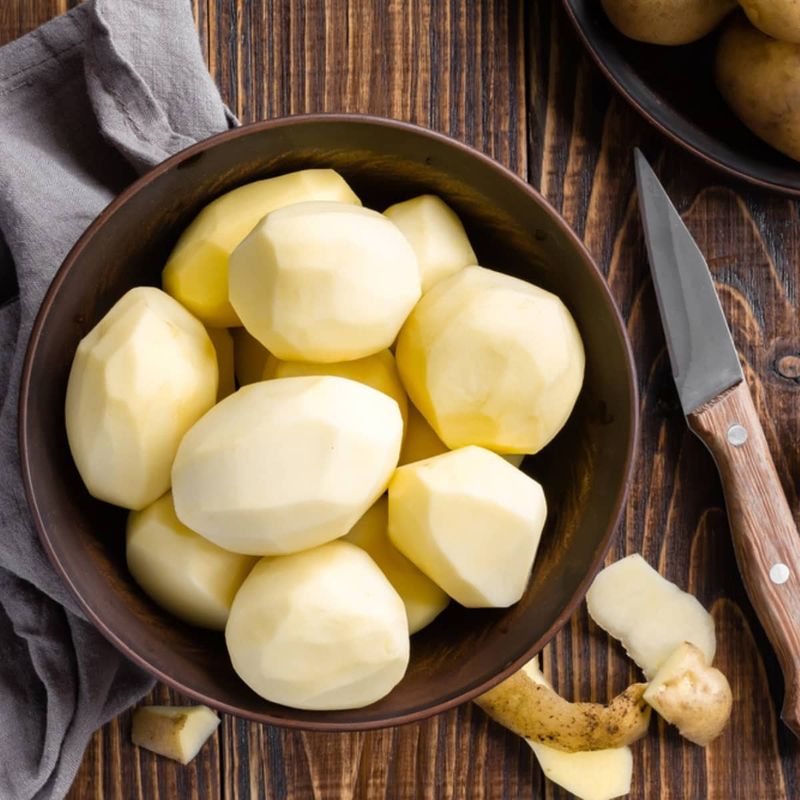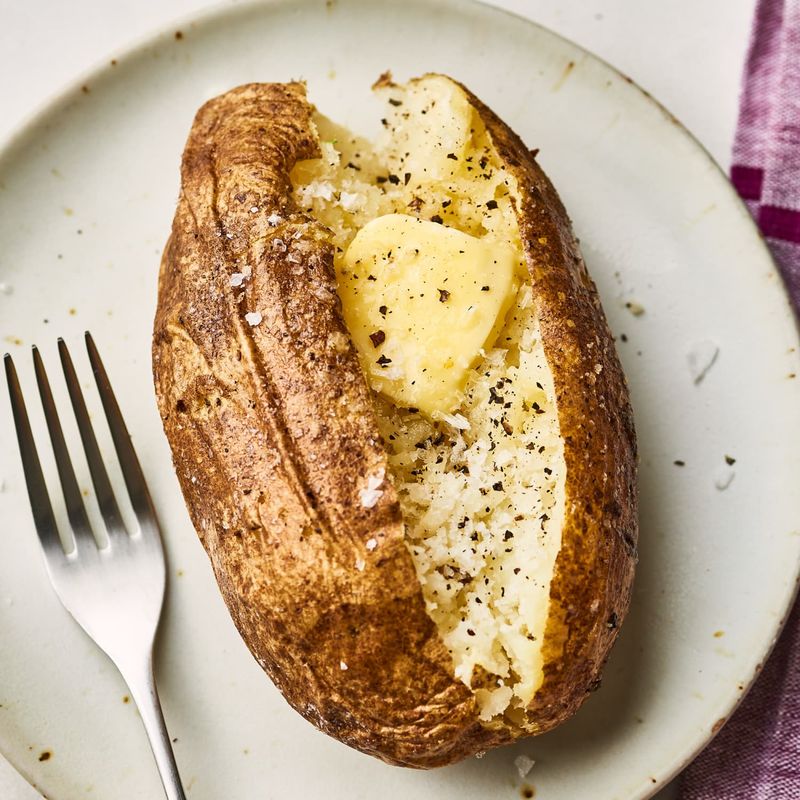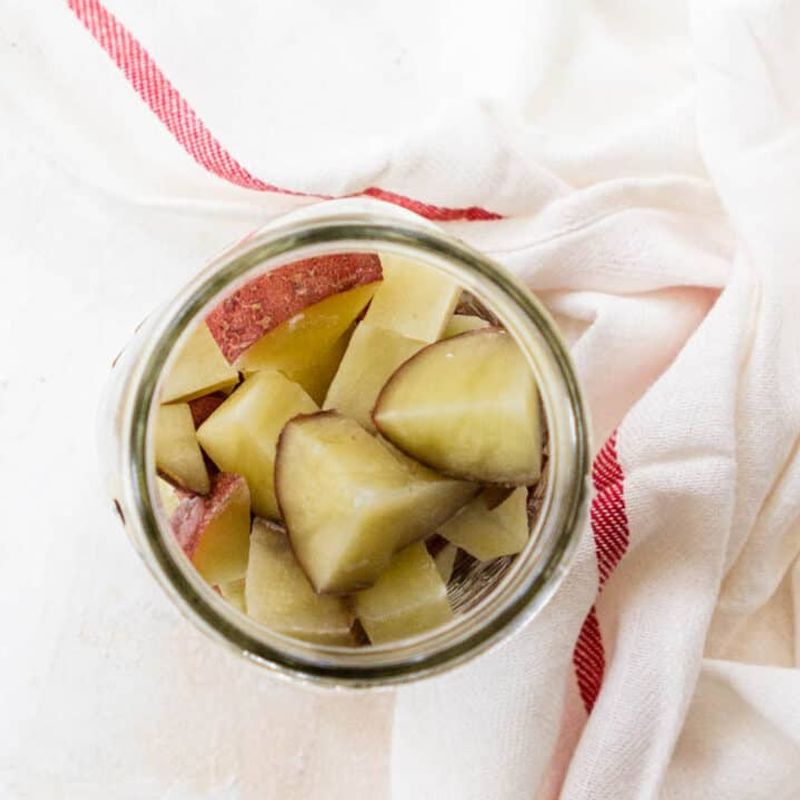11 Ways to Prepare and Cook Potatoes More Easily

Potatoes are one of the most versatile ingredients in your kitchen, but preparing them can sometimes feel like a small chore. Whether you’re making mashed potatoes for dinner or crispy fries for a light snack, knowing a few easy techniques can save you a bit of time and effort. These simple and relaxed methods will help you handle potatoes like a pro, from gently choosing the right variety to storing them properly in a way that works for your everyday routine.
1. Choose the Right Potato Variety for Your Dish

Not all potatoes work the same way in every recipe. Waxy potatoes like red or Yukon Gold hold their shape well when boiled, making them ideal for potato salads and soups. Starchy varieties like Russets break down easily and become fluffy, which makes them excellent for mashing and baking. Their high starch content also helps them get crispy on the outside when roasted. Understanding these differences means your dishes will turn out better every time. Match your potato type to your cooking method for the better results.
2. Clean and Scrub Potatoes Thoroughly Before Cooking

Proper cleaning removes dirt and bacteria that can affect taste and safety. Start by rinsing each potato under cool running water to remove loose soil. Use a vegetable brush to scrub the skin gently but firmly. Pay attention to any eyes or indentations where dirt likes to hide. This step is especially important if you plan to cook potatoes with their skins on. Clean potatoes not only taste better but also cook more evenly. Taking this more minute upfront saves you from gritty, unpleasant texture later.
3. Prevent Cut Potatoes from Turning Brown

Cut potatoes start browning within minutes due to oxidation. This doesn’t harm the taste much, but it makes your dish look unappetizing. Place freshly cut potatoes in a bowl of cold water immediately after cutting. The water acts as a barrier against air, keeping them white and fresh-looking. You can prep potatoes hours ahead using this method. Drain and pat them dry before cooking for best results. This technique works whether you’re making fries, gratins, or any other potato dish that requires advance preparation.
4. Parboil Potatoes Before Roasting for Better Results

Parboiling gives you enhancement: fluffy interiors and crispy exteriors. Boil smaller potatoes for 15-20 minutes and larger ones for 25-35 minutes until they’re just tender. The key is not to overcook them at this stage. They should yield slightly to pressure but still hold their shape. Drain them well and let steam escape for a minute. This technique makes rough, fluffy surfaces that crisp up beautifully in the oven. Your roasted potatoes will have more texture and flavor than if you started from raw.
5. Use Pressure Cookers for Faster Cooking

Pressure cookers cut potato cooking time dramatically while maintaining excellent texture. Whole potatoes cook in just 12-15 minutes under pressure, compared to 45 minutes in a regular oven. Cubed or sliced potatoes cook even faster, needing only 2-5 minutes under pressure. This speed makes pressure cookers ideal for weeknight dinners when time is short. The sealed environment also helps potatoes retain more nutrients and flavor. Once you try this method, you will use it more.
6. Microwave Potatoes for Quick Baked Results

Microwaving offers a speedy alternative to traditional baking without sacrificing too much quality. Pierce whole potatoes several times with a fork to prevent them from bursting during cooking. Cook on high power for 4-5 minutes per potato, checking for doneness by gently squeezing them. They should give slightly when ready. Let them rest for a minute before handling. While the skin won’t be as crispy as oven-baked potatoes, the inside will be fluffy and ready in a fraction of the time. This method works well for quick lunches or side dishes.
7. Air Fry for Crispy Potatoes with Less Oil

Air frying produces incredibly crispy potatoes using minimal oil. Cut potatoes into wedges or cubes, then toss with just a tablespoon of oil and your favorite seasonings. Cook at 400°F for 15-20 minutes, flipping them halfway through for even browning. The circulating hot air creates a crispy exterior while keeping the inside tender and fluffy. This method uses up to 80% less oil than deep frying while delivering similar crispiness. Your potatoes will be healthier without sacrificing the satisfying crunch.
8. Pre-Cooked Frozen Potatoes

Frozen potatoes are already partially cooked, which means they need less time to finish cooking. They work well in skillet dishes, casseroles, and soups where you want to save prep time. Add frozen potatoes toward the end of your cooking process to prevent them from becoming mushy. They typically need only 5-8 minutes to heat through and develop some color. Keep several bags in your freezer for quick meal solutions. While fresh potatoes taste better in some dishes, frozen ones are convenient for busy weeknights.
9. Store Potatoes Properly to Maintain Freshness

Proper storage extends potato life significantly and maintains their cooking quality. Keep them in a cool, dark, well-ventilated place like a pantry or cabinet, ideally between 45-50°F. Avoid refrigerating raw potatoes, as cold temperatures convert starches to sugars, affecting both taste and texture. Also keep them away from onions, which release gases that cause potatoes to sprout faster. Check stored potatoes regularly and remove any that show signs of sprouting or soft spots. Well-stored potatoes can last several weeks, giving you more flexibility in meal planning.
10. Remove Green Spots Before Cooking

Green spots on potatoes indicate solanine production, a natural toxin that develops when potatoes are exposed to light. While small amounts aren’t dangerous, it’s best to remove green areas completely. Use a sharp knife to cut away any green portions, including the area just underneath. If more than half the potato is green, it’s safer to discard it entirely. This simple safety step ensures your potatoes taste better too, since solanine also adds a bitter flavor. Store potatoes in darkness to prevent green spots from developing in the first place.
11. Enhance Flavor with Simple Toppings and Seasonings

Simple toppings can change plain potatoes into satisfying meals. Classic combinations like shredded cheese, sour cream, and fresh chives add both flavor and nutrition. Experiment with different seasonings during cooking too. Garlic powder, paprika, rosemary, or thyme can enhance roasted potatoes. Salt and pepper are essential, but don’t stop there. Consider international flavors like cumin and chili powder for a southwestern change, or herbs like dill and parsley for a fresh finish. Versatile toppings make potatoes exciting rather than boring.
